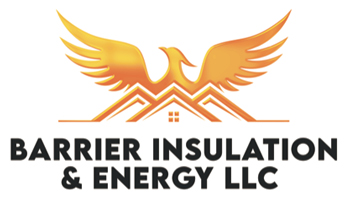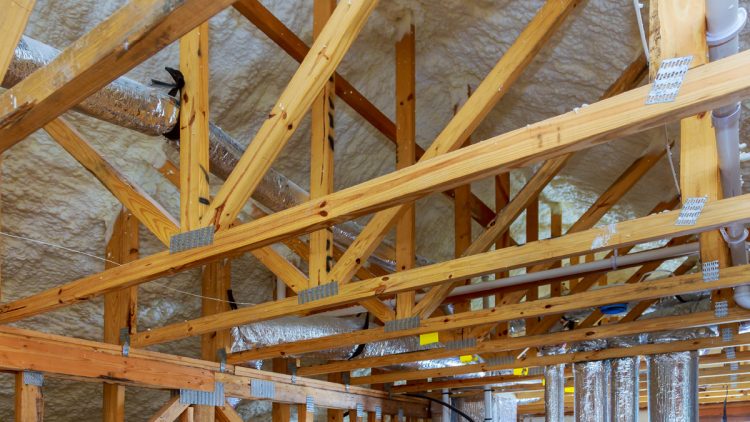How Much Insulation Do I Need In My Attic?
Once you have air-sealed your attic, it’s time to check your insulation levels and see if more insulation is needed. The attic is seen as the easiest place to add insulation, which improves the overall energy efficiency of the home.
Do I Have Enough Insulation?
Regardless of the kind of insulation is in your attic, one way to visually check the area’s needs is to look across the span of the attic. If the insulation level is barely below your floor joists, it’s time to add more insulation. If you cannot see the floor joists due to the insulation being above them, then it is not necessary to add insulation at this time.
It’s crucial for the insulation to be evenly distributed with zero low spots. If your attic insulation fully covers the joists and it is distributed evenly, then you have enough insulation, according to EnergyStar.
How Much Insulation Should I Add?
Insulation levels are specifically outlined by R-Value. This is a measurement of the insulation’s ability to resist heat flow. This means the higher the R-Value, the better the thermal performance of the specified insulation. The recommended R-Value level for the majority of attics is to insulate R-38 or between 10-14 inches, depending on type of insulation.
Best Types Of Insulation
Which insulation you choose will be based largely on a few key factors. Your budget for installing insulation is one of these key factors. Another consideration is how long you intend on staying in the home. If you plan this house as your last move, then the added cost of installing premium insulation will pay you back for years to come.
If you are planning on moving soon you may still consider spray foam insulation as it will increase the overall value of the home. Ultimately the question of which will be best for you, your home, and your budget is a conversation for you and your professional insulation contractor.
Batt Insulation
Batt insulation is commonly referred to as “batts” or “rolls”. This type utilizes a flexible blanket-like insulation that is best suited for easily accessible areas. Batts and rolls can be used in non-standard areas, so the material will have to be cut to size.
The blankets come in high, medium and standard-density constructions, made from fiberglass, rock wool and other similar materials. Batt insulation can be fitted quite easily to the specific areas, but it may be hard to fit in unusual or hard-to-access areas.
Blown-In Insulation
Blown in insulation is constructed of either fiberglass or cellulose that is blown into cavities in walls. This material is used to fill gaps in the insulation. Blown in insulation is ideal for attic spaces filled with nooks and crannies that are difficult to navigate through.
Cellulose blown in insulation is the most affordable option for home and business owners because it is made of recycled materials. Once it is installed, this insulation can last up to 25 years with very reliable performance overall.
Cellulose Insulation
Fiberglass and cellulose insulation are the two cheapest insulation types you can install in your home. While fiberglass is much more common cellulose is still the second most popular insulation material in the country.
For customers who can’t afford the higher performance spray foam insulation these types of insulation offer the layer of insulated comfort homes need.
Fiberglass Insulation
Fiberglass insulation has been installed in homes for many decades. It is comprised of extremely fine glass fibers which reinforce a pillow like plastic.
The fine glass is added to increase the overall strength of the insulation and help it resist sagging. It usually comes in one of 3 types, loose fill, rolls, or batts.
Spray Foam Insulation
Spray foam insulation is sprayed on wet and it expands rapidly into gaps, cracks, and solidifies as a hard, thick foam. This insulation type can be used to insulate the walls of new build and existing homes. One of the best features of spray foam insulation is how well it conforms automatically to all of the odd shaped cavities and air leaks.
The R-value of spray foam depends on the chemical makeup as there are two variants, closed and open cell spray foam insulation. Spray foam insulation does require a slightly greater investment, but it does offer superior performance.
Schedule Your Insulation Services Today!
Whether you are building a new house, or just need to remove the old insulation and install a newer more energy efficient option Barrier Insulation is Phoenix’s first choice in home and commercial insulation. We proudly provide the valley’s more comprehensive insulation service that helps you stay more comfortable and save on energy. Click here to schedule on our website, or just give us a call at 602-499-2922.

